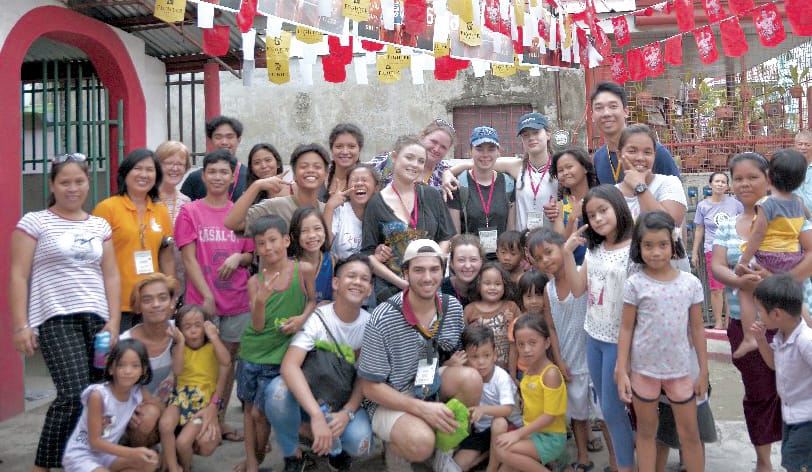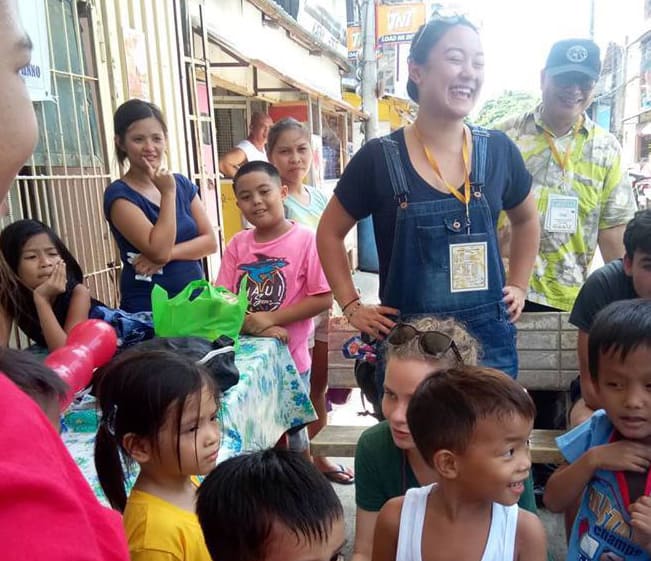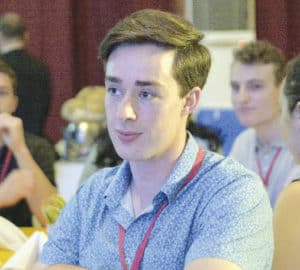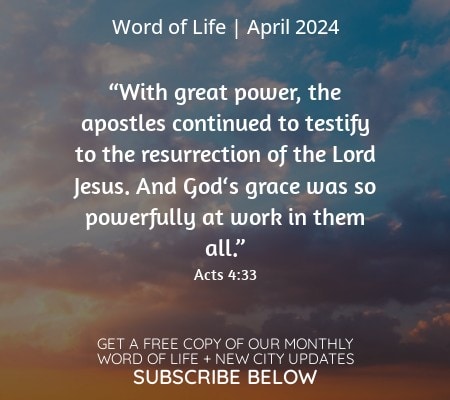I was in the Tagaytay highlands, near the southwest end of the island of Luzon, about three hours’ drive from Manila. I had a mattress on the floor, no sheets, and a small wooden monk-like writing desk with a chair. Philippine jungle at night was a jazz band, each animal with their own language responding to the rest in an emotional tune. Every morning climbing into the jeepney, my military escort now a familiar shadow not too far behind. The morning jeepney ride presented novel-like views of Taal, the smallest volcano in the world.

The volcanic island is located in a crater lake. Two weeks in the Philippines were enough time for me to witness on the surface the deep-seated challenges such a country faces. Poverty, violence and pollution, and waste management and extreme weather events made more frequent from climate change are but a few examples of challenges Filipinos face within their local communities.
As a young adaptable volunteer keen for adventure, I fast developed that “keep calm and carry on” attitude (even after falling into sewage) but the problems I saw quickly seemed deeper than that pool of sewage I collapsed into.
What does peace look like? I began to question how interconnected the problems around me were. I realized that achieving peace requires a combination of positive and negative peace, that is, the absence of direct violence at both a macro and micro level alongside the presence of conditions that allow positive well-being and fulfilling relationships.
Violence is something that we rarely define and is difficult to understand. We know violence comes in many faces, but it is critical to define in order to identify. There is structural violence such as poverty. Violence is a method used when creating and enforcing social structures. Cultural violence encompasses racism, sexism and religious intolerance.
 Ecological violence is violence practiced on the environment. Easy examples that come to mind are pollution and overconsumption. Finally, there is direct violence.
Ecological violence is violence practiced on the environment. Easy examples that come to mind are pollution and overconsumption. Finally, there is direct violence.
Breaking down and defining violence, I began to view this concept as more common back home in New Zealand than I had previously thought. Violence does not require war making.
I was violent when I purchased an unnecessary amount of clothing last week. Violence is
a reactionary measure taken as a response to conflict. Conflict is experienced by those or ideas that believe to have incompatible goals with each other. My conflict during shopping seemed to be style versus sustainability.
During my stay in Cebu City, the queen city of southern Philippines, I discovered the wonderful effects of true dialogue. I was welcomed into the homes of families supported by Bukas Palad Foundation, this local charity sponsors children so they can attend and succeed in primary, secondary and tertiary education. Mothers from the poorest of circumstances understood the power of education as a tool to solve problems.
 Even in the most impoverished neighborhoods, there was a community spirit which will give the children the environment to collectively lift each family’s prosperity. No doubt these families have difficult challenges, but through effective community dialogue
Even in the most impoverished neighborhoods, there was a community spirit which will give the children the environment to collectively lift each family’s prosperity. No doubt these families have difficult challenges, but through effective community dialogue
these challenges seem possible to overcome.
Dialogue is more than an ad hoc conversation. Dialogue is a deep appreciation for the others’ views and circumstances. Dialogue involves serious listening, empathy and an honest reply. Dialogue is reciprocal.
My experience in the Philippines began to draw me back to New Zealand. I returned home back to my university studies. What does dialogue look like here? In New Zealand, there is a unique series of negotiations between Māori (New Zealand’s indigenous peoples) and the Crown. I had become involved in this historic process during a two-month internship at the Waitangi Tribunal, an independent legal tribunal that gives Iwi (tribal groups) a forum to express their grievances and highlight historical injustices.
The settlement process involves the Government moving towards a deep understanding with Iwi over historical injustices committed by the Government and settlers. Common understandings are reached, apologies accepted, and plans are put forward for redress and reparations. The fundamental principles of the settlement process involve partnership, participation and protection. This is dialogue.
Dialogue is a process taken between those that find themselves in a position of conflict. Dialogue is consciously taken to avoid violence. Moreover, dialogue is an avenue for the creation of positive peace. In a world so interconnected, dialogue is held back as communities and countries still hold entrenched assumptions due to a lack of deep knowledge of the other, these lapses in effective dialogue leads to violent action as a response to conflict. There will always be conflict among peoples and societies. Creating a more peaceful global community can be achieved if dialogue is practiced over violent response.
I was struck by the enormity and complexity of the problems I saw during my travels. But I was overwhelmed by the ability and desire between peoples to reconcile their different understandings by looking at the other in the eye. Dialogue is not the end answer to many complex problems; however, it is a way to envisage violence in a more nuanced way, identify and restrain from using it.
A more peaceful global community is possible if we desire it, by developing connections with those around us and beginning to understand their cultures, history and beliefs.




